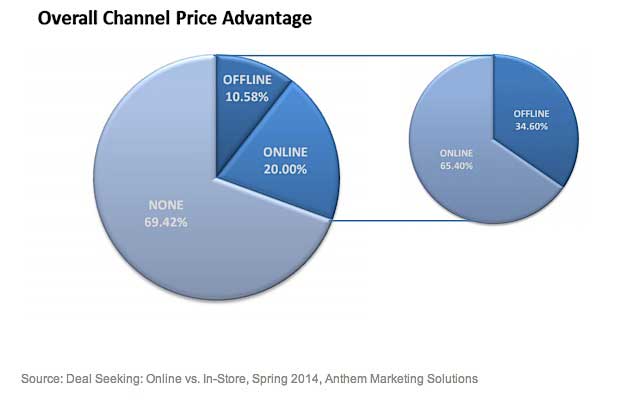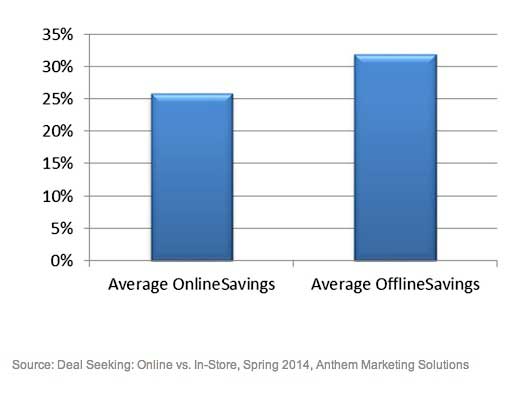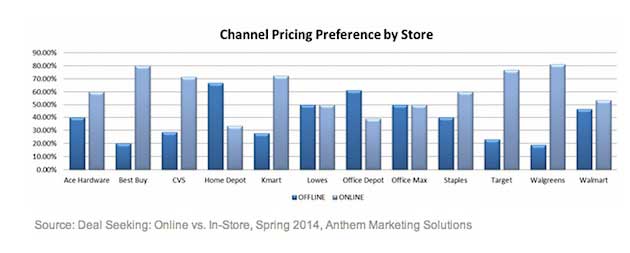Most consumer products (69%) have the same price online and offline, according to a recent report from Anthem Marketing Solutions.
However, when there is a price difference between the two, 65% of the it's the time online channels that are cheaper than offline (in-store) channels, the study found.
The report was based on an analysis of the prices of commonly purchased consumer products across multiple categories, including personal care, books, electronics, entertainment, home improvement/household items, and office supplies.

Below, additional key findings from the report.
Average Savings
- When there is a difference, online prices are usually lower than in-store prices. However, on the increasingly rare occasions when the price is less in-store, it is often substantially lower (32% average savings in-store vs. 26% average online).
- For example, in the entertainment category, when a price difference was observed, there was just a 15% chance of finding the better deal in-store. But, in those situations, the average savings was 76%, suggesting it continues to pay to do price comparisons for certain categories.

Savings by Price Tier
The trend of general price parity, and an online advantage when there is a difference, was observed at all price levels:

Same-Store Comparisons
- 8 of the 12 retailers examined in the study offered more favorable pricing online than in-store.
- Prices for Walgreens, Best Buy, Target, Kmart, and CVS were lower online than in-store more than 70% of the time.
- Wal-Mart offered a nearly even split, with 47% of prices favoring offline and 53% favoring online.
About the research: The report was the seventh installment of a semi-annual study comparing online and in-store pricing of consumer goods across a range of commonly purchased categories (including personal care, books, electronics, entertainment, home improvement/household items, and office supplies).





